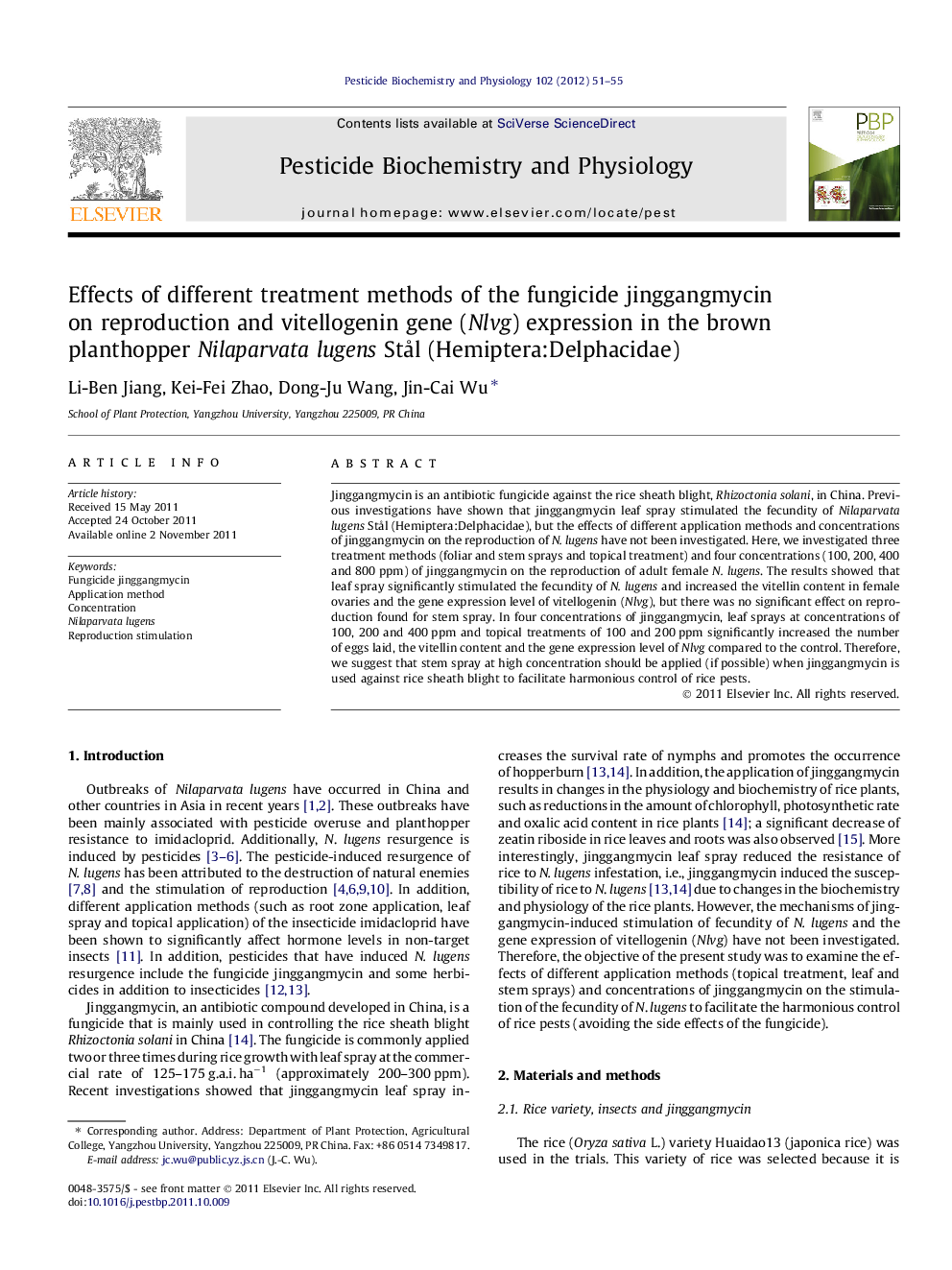| کد مقاله | کد نشریه | سال انتشار | مقاله انگلیسی | نسخه تمام متن |
|---|---|---|---|---|
| 2009678 | 1066681 | 2012 | 5 صفحه PDF | دانلود رایگان |

Jinggangmycin is an antibiotic fungicide against the rice sheath blight, Rhizoctonia solani, in China. Previous investigations have shown that jinggangmycin leaf spray stimulated the fecundity of Nilaparvata lugens Stål (Hemiptera:Delphacidae), but the effects of different application methods and concentrations of jinggangmycin on the reproduction of N. lugens have not been investigated. Here, we investigated three treatment methods (foliar and stem sprays and topical treatment) and four concentrations (100, 200, 400 and 800 ppm) of jinggangmycin on the reproduction of adult female N. lugens. The results showed that leaf spray significantly stimulated the fecundity of N. lugens and increased the vitellin content in female ovaries and the gene expression level of vitellogenin (Nlvg), but there was no significant effect on reproduction found for stem spray. In four concentrations of jinggangmycin, leaf sprays at concentrations of 100, 200 and 400 ppm and topical treatments of 100 and 200 ppm significantly increased the number of eggs laid, the vitellin content and the gene expression level of Nlvg compared to the control. Therefore, we suggest that stem spray at high concentration should be applied (if possible) when jinggangmycin is used against rice sheath blight to facilitate harmonious control of rice pests.
Jinggangmycin is an antibiotic fungicide against rice sheath blast and its overuse may cause resurgence of Nilaparvata lugens due to stimulate reproduction. Leaf spray among three treatment methods significantly stimulated the fecundity of N. lugens and increased the vitellin content in female ovaries and the gene expression level of vitellogenin (Nlvg), especially leaf spray of 200 ppm jinggangmycin.Figure optionsDownload as PowerPoint slideHighlights
► Jinggangmycin leaf spray up-regulated the expression level of vitellogenin gene.
► Concentrations of significant stimulation of reproduction are 100, 200 and 400 ppm.
► Stem spray did not stimulate the fecundity of Nilaparvata lugens.
Journal: Pesticide Biochemistry and Physiology - Volume 102, Issue 1, January 2012, Pages 51–55